#canadian legion
Photo

“Ex-Service Men To Have Dinner,” Ottawa Journal. December 23, 1930. Page 13.
----
Unemployed Single Veterans to Dine at Trafalgar House Christmas Night.
----
All single unemployed ex-service men are assured of a dinner Christmas night as a result of the work of the Canadian Legion. They will dine at Trafalgar House at 6 o'clock and the repast to be served is to be followed by an entertainment, full details of which are not yet available.
Tickets for the dinner are obtainable at "The Shelter,” Wellington and Lyon streets at 7 o'clock this evening. Through the courtesy of three uptown theatres, tickets are to be provided to ex-service men enabling them to view one show this week and a local miniature golf course is placing its course at their disposal for a round of the Royal and Ancient.
At a meeting of the executive of the Canadian Legion held last night it was announced that the hospital committee under the chairmanship of W. T. Barnes would visit every hospital in the district Christmas Day.
On New Year's Day, the ex-service men are due to fare equally well as they are being given a dinner at "The Shelter" at 6 o'clock by The Salvation Army.
That the ex-service men are imbued with a desire to play the game was strikingly illustrated yesterday when the Legion received $10 from a veteran who came to Ottawa a short time ago to get his pension adjusted. He was absolutely without means or work and was taken under the wing of the Legion at "The Shelter." Happily his pension was speedily adjusted and he secured a position. He lost little time in giving tangible expression to his gratitude in the form of a cheque to help his less fortunate comrades.
Another veteran who also has been a guest at “The Shelter," and who has secured work which promises to develop into a permanent position in a letter to officials of the Canadian Legion states that he attributes his present fortunate position to the kindness shown by the organization over a difficult period.
#ottawa#canadian legion#unemployed veterans#canadian veterans#christmas concert#christmas#ex-servicemen association#military veterans#returned soldiers#great depression in canada#charitable philanthropy
1 note
·
View note
Text
New Legion Hall Carleton Place #192 --1960-- Trotman Files
New Legion Hall Carleton Place #192 –1960– Trotman Files
Thanks to Christoper Trotman and family- from their Grandparents that once lived at 244 William st.
January 1960 Careton Place Gazette
Lanark and Renfrew 42nd Pipes 1996 Legion #192 News
The Story of Trenches –Fred Knight Legion Branch #99 Cowansville
My First Memory Of Remembrance Day — The Legion Kettle
Legion Week 2021- Branch 240 — Almonte– Little Olympics 1968
Legion Week 2021- Branch…
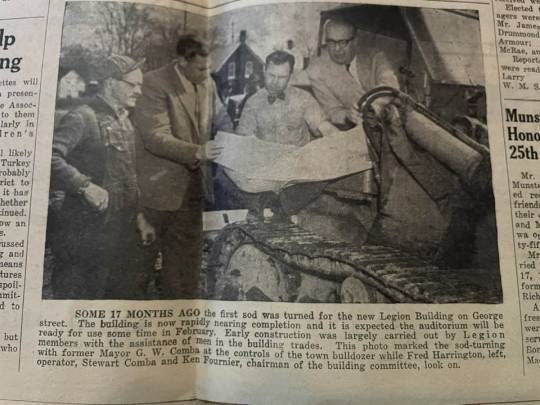
View On WordPress
#canadian legion#Carleton-Place#genealogy#History#Lanark-County#legion#new legion hall#ontario#trotman
0 notes
Text

august 28th 1996
[ID: a digital drawing of susie lavoie, julie kostenko, frank morrison, and joey, (in that order) from the legion (dead by daylight.) susie is a white woman with long, split dyed hair, the left side being pink, and the right side being teal, braces, acne. she is wearing a tealish blue hoodie, a red plaid skirt, black tights, and fingerless gloves. she is looking towards the camera and smiling awkwardly. to her right is julie, who is a white woman with long, blonde hair on the right side of her face. she is wearing a black jacket, a gray shirt, a gray hood, and camo pants. she is smiling happily and has her arm wrapped around julie. to julies left is frank. he is a white man with short, brown hair, the tips of which are dyed blonde, and a bit of stubble. he is wearing a red baseball jacket, a dark gray shirt, and brown pants. he has one arm wrapped around julie, and another wrapped around joey. he is looking towards the right and seems chill. joey is a black man with short black hair, wearing a black jacket, a light gray shirt, and grayish green pants. he is doing a "devil" sign with his left hand and is smiling. the background is snowy, with a few pine trees in the background. END ID/]
#canadian teenagers are crazy#anyways please please please ignore the fact that its clearly winter in the background and the photo was apparently#taken in the middle of summer. im too lazy to redo it#im still kind of neutral on the legions lore. but i like the idea of them#the tragedy of the legion is that they were stupid teenagers who will now never have the chance to grow into stupid adults#anyways so i got moried by a julie earlier today#the legion#dbd legion#dbd#dead by daylight#julie kostenko#susie lavoie#frank morrison#joey legion#so evil of them (behaviour) to give the legion member with the same name as me no last name.#pleaseee give him a last name i can't keep calling him legion#its just not right :(#joeys art#image described
54 notes
·
View notes
Text









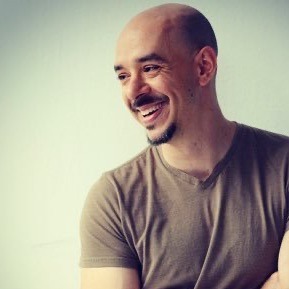
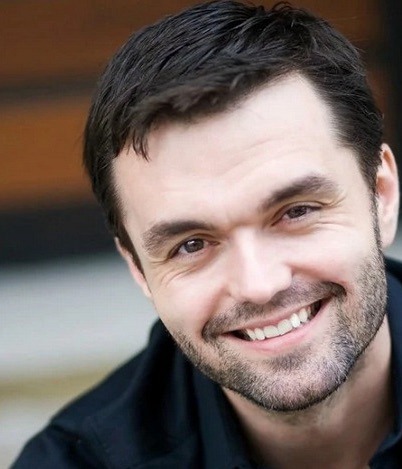



The amount of Canadian talent for this series is LIFE FOR US HERE IN THE GREAT NORTH🎉💖😭
aND THIS IS JUST THE SECOND GAME'S CHARACTERS👏👏
side note: SITARA IS FUCKING VOICED BY THE SAME PERSON THAT PLAYS ECHO FROM THE 100
#watch dogs 2#watch dogs#wrench watch dogs#sitara dhawan#raymond kenney#josh sauchak#horatio carlin#watch dogs legion#watch dogs 1#watch dogs wrench#canadian actor#canadian content#canada#canadian artist#medexwatchdogsedit
27 notes
·
View notes
Text

i drew this early last year when a friend went through the entire mass effect series, this one from ME2 and GOD the whole thing with the geth were so EMOTIONAL I just wanted them to get along aaaaa
#mass effect#tali vas normandy#mass effect legion#mass effect tali#me2#me3#geth#bunart#this was all could thing of when they were going through the legion sidequest etfc#btw we romaced garrus bc he was the BEST CHOICE EVER#and we had a ton of mods to fic the ending bc give me a proper send off#or give me death#ill fight you bioware yall are canadian too#mordin was my other darling <3#dont touch me ahisgfbaoslfba
86 notes
·
View notes
Text

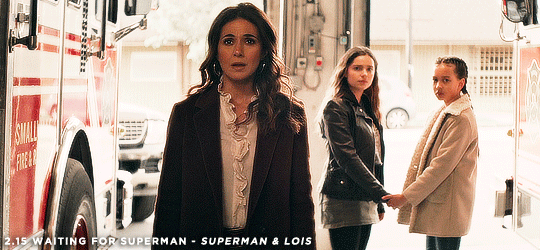

—Lana and her daughters at the Smallville Firehall, Superman and Lois, "Waiting for Superman", which was filmed at Firehall 8, 17572 57 Avenue in Cloverdale, Surrey, British Columbia. The Royal Canadian Legion Branch 6 building is visible across the street behind the girls.
#Filming Locations#Trivia#Smallville Firehall#Firehall 8#Cloverdale#Royal Canadian Legion Branch 6#2.15 Waiting for Superman#Emmanuelle Chriqui#Lana Lang Cushing#Inde Navarrette#Sarah Cortez#Sophie Cushing#Joselyn Picard#Superman & Lois
24 notes
·
View notes
Video
youtube
Knocked Loose 2022-08-20 Royal Canadian Legion Branch 1 Calgary, Canada
21 notes
·
View notes
Text
you ever realize that some DBD killers probably have accents thicker than their standard huffs and whatnot show
#Wesker has an accent you can hear it#But the Legion is....Canadian LMAO#tbd#all that glitters is not silver (ooc)
10 notes
·
View notes
Text
One thing that will never make any sense to me is why we have actors faking accents in movies and tv shows. Like just hire someone who already has that accent? And so often they’ve got British actors playing Americans and vice versa and it’s just never good bc Americans are rarely good at British accents and British actors well.. they’re usually able to pronounce individual words in an American accent but they pretty much always end up mixing many different regional accents together which is extremely distracting so like. Why not just hire someone who actually has the accent the character is supposed to have… having actors fake accents is just unnecessary and never sounds as good as a native speaker would
#I was trying to watch the show Legion with my sisters bc I watched it a few years ago and though the first season was really good#But the main character is played by a British actor playing an American and his accent is SO. BAD. Like.#half the words he speaks sound deep southern and the other half are a mix of New Yorker and midwestern. With some Canadian thrown in there#And it’s just so distracting it makes it hard to watch…#And the thing is there isn’t really any reason his character couldn’t’ve just been British like#if you’re dead set on that actor just let him use his real accent instead of forcing us to endure his painful attempt at an American one#If it’s important to the character that he be American then just hire an American actor like are we running out of Americans? I don’t get i#Anyway. This is why I respect Kermit the frog’s decision to not attempt a British accent as Bob Cratchit in the Muppet’s Christmas Carol
7 notes
·
View notes
Text
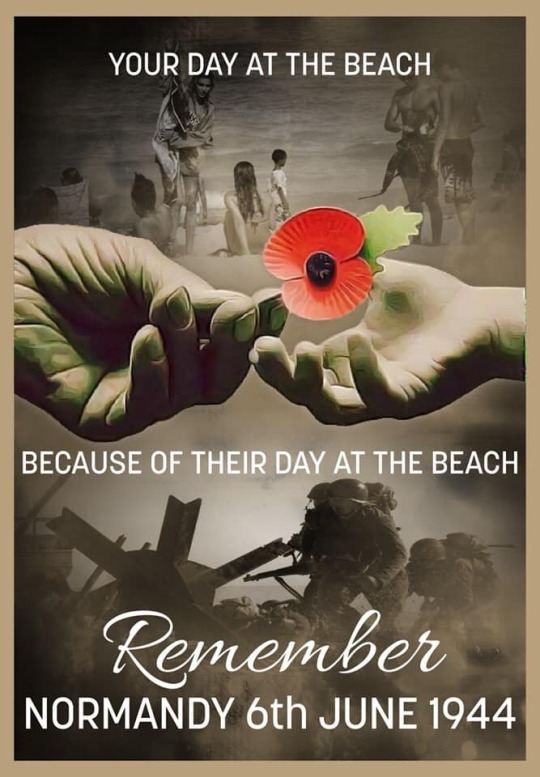
#D-Day#WWII#Normandy#Royal British Legion#6 June 1944#Royal Canadian Legion#Juno Beach#Allies#Commonwealth
85 notes
·
View notes
Text
What if every member of The Legion is a lgbtq+? Susie, bi transgirl, Frank straight transman, and Julie, his beautiful pansexual gf, and Joey, who when asked says 'queer' and dares you to ask more.
#dbd#thoughts#love The Legion Canadian icons#also headcannon Susie as indigenous bc wtf devs you gave us a group of Canadians and none are Native???
2 notes
·
View notes
Photo

“Winnipeg’s Canadian War Disability Pensioners’ Association (CWDPA) formed in December 1932 in the wake of the relief cut. With 7,446 pensioners in Manitoba and 1,169 in the provincial capital, by May 1933 the CWDPA boasted 800 Winnipeg members. The CWDPA facilitated the creation of and affiliated with pensioner bodies in other urban centres—by 1937, their combined membership totalled 22,000 out of approximately 80,000 Canadian pensioners. Whereas the Legion’s motto, coined by Canadian Corps Commander, Lieutenant-General Arthur Currie, stressed the honour of continued service—“They served till deat —why not we?”—Canada’s pensioner associations adopted the Three Musketeers’ slogan of solidarity—“all for one, and one for all.” As Craig Heron has suggested, it was “comradeship,” the common cause of protecting their rights, and “a belief in collectivist social responsibility and a challenge to any vested interests that threatened the common good,” that brought veterans, like those within the CWDPA, together.
The CWDPA’s political activity revolved around Deer Lodge Hospital. Military hospitals are the “locus classicus of the disabled veteran’s identity,” according to international historian David A. Gerber. It was within these rehabilitative institutions that disabled veterans “developed intense interpersonal relationships,” and formed “self-conscious groups” and “formal organizations.” The “disparity between rehabilitation propaganda and the reality of disability,” provided the backdrop for individual acts of resistance in US institutions, reveals Ana Carden-Coyne; “neither grateful nor compliant,” many US and Canadian disabled veterans rejected the coercive, authoritarian, and infantilizing aspects of military hospitals. Beneath the dominant portrayal of harmony between medical staff and disabled veterans there seethed an animosity and rebuke of the efficacy and promise of rehabilitation.
One of eight Canadian veterans’ hospitals, Deer Lodge was also the DPNH’s administrative centre in Manitoba. Formerly a hotel, the lodge was managed by Major John Payson Oliver, a civil engineer and military officer. Located in Silver Heights, St. James municipality, six kilometres west of downtown Winnipeg on Portage Avenue, the three-storey, Tudor-revival lodge resembled a bucolic English inn, with latticed windows, exposed beams, and a wraparound verandah. The building was surrounded by landscaped gardens, stately oaks and maples, and overlooked the Assiniboine River. During the 1930s the Lodge typically housed up to 150 veterans and admitted an average of 1,074 patients a year. Pensioners convalesced, sought medical aid, collected their pensions and relief, and died at Deer Lodge. The CWDPA recruited patients to the association and regularly gathered in lodge halls. As in the US, the CWDPA’s emergence within Deer Lodge was a collective manifestation of disabled veterans’ indictment on the limits of the modern science of rehabilitation and its welfare apparatus; government interventions had not helped all war survivors to “move on.”
Samuel Sykes, CWDPA president from 1933 to 1937, was no stranger to Deer Lodge. A carpenter by trade, Sykes enlisted in February 1916. At Vimy Ridge, a piece of shrapnel entered behind Sykes left ear, broke his upper jaw and exited below his right eye. For 17 months, Sykes ate food through a straw. During his recovery at Deer Lodge, Sykes survived influenza; his wife and two-year-old daughter did not. Radicalized by his hospitalization, family tragedy, and the postwar depression, Sykes emerged as a One Big Union (OBU) radical. As a labour activist, Sykes organized barbers, retail clerks, and meat packers, and represented streetcar employees
Sykes’s antiwar and socialist leanings coloured CWDPA initiatives. At a 1925 Armistice gathering, Sykes “drew a vivid picture of conditions … on the battlefields.” And for what?, Sykes asked. A country full of “half-starved widows and children?” Cenotaphs, charged Sykes, only “cover up the treachery of the capitalist system.” That same year, representing Winnipeg’s unemployed at city hall, Sykes blamed poverty on the exploitation of the “master class.” “Why don’t you go to Russia where you haven’t got capitalism?,” interrupted a city councillor. In a socialist subversion of Anglo-Canadian nationalism, Sykes retorted, “Because I speak English and don’t come from Russia.” Sykes jumped ship from the OBU to the CWDPA after the union became embroiled in controversy for promoting an illegal newspaper sweepstakes. Within the CWDPA, socialist “Commandant” Sykes found that a violated moral economy offered a gateway to veteran radicalism. Sykes belongs in the ever-widening pantheon of interwar leftists who do not fit neatly into the Communist Party of Canada (CPC) versus Co-operative Commonwealth Federation (CCF) paradigm.
Although more militant than the Legion or the right-leaning Army and Navy Veterans, pensioner associations competed with the Communist Workers’ Ex-Servicemen’s League (WESL). WESL’s as many as 40,000 members nationwide acted as a bulwark against Legionnaire anti-Red and anti-labour vigilantism and insisted on the indivisibility of all workers, regardless of war service. With WESL’s first chapter, and eventually its national headquarters in Winnipeg, Manitoba’s capital was a hotbed of radical veterans’ politics. Where WESL’s leadership raised “a radical awareness of capitalist exploitation and a commitment to revolutionary transformation” among working-class veterans, the CWDPA also nudged war survivors to spurn “bourgeois leadership” and move beyond the “quiescent loyalty” demanded by the Legion and the Canadian state.
Invading their turf, Sykes and the CWDPA faced Communist scorn as the CPC fitfully emerged from its sectarian “Third Period,” wherein it lambasted other leftists as enemies of the revolutionary movement. Some CWDPA members, like Captain William Talbot, returned arrows in anti-Red harangues despite sharing many of WESL’s immediate objectives. In 1933, as the CPC tempered its isolationism with tepid calls for a “united front,” the CWDPA and WESL formed an alliance in the short-lived United Council of Veterans.
With Sykes as the chair, the United Council demanded the restoration of the 1932 pension rates, an overhaul of pension administration, free medical attention, 100% pension rate allowances for “burnt-out” veterans and those over 50 years old, and federal relief for all unemployed ex-soldiers. The United Council moved that all relief and pensions be paid from “government military appropriations and the interest on war debts.” Leo Carson, one-time CWDPA vice president, was one of the association’s more outspoken Communist supporters. Seeing “no reason why one who has served his country should come back to Canada the land of plenty and starve,” Carson, a Great War conscript, was among the leftists injured during the June 1934 battle in Winnipeg’s market square against local fascists
On the eve of the Deer Lodge siege, the CWDPA extended their “moral and sympathetic” support to the communist-led On-to-Ottawa trek. In turn, Vancouver’s WESL branches sent letters of solidarity to the Deer Lodge occupiers. This was hardly a surprise as they frequently targeted the Vancouver Shaughnessy Veterans’ Hospital as a site of protest. Communism, in the minds of many interlopers, was much more about tactics than a revolutionary endgame. Deer Lodge camper and ex-corporal Frank Skidmore, a victim of shell shock and a gunshot wound to his face, wrote to the Winnipeg Tribune to declare that it was high time veterans became “communistic” and stage “a mass protest from coast to coast.” Although clearly not run by Communists, on the ground and in the matter of immediate aims and strategy, the CWDPA shared much with Red-inclined Great War survivors
The CWDPA also aligned with the labour movement. Several directors were prominent union leaders. The association critiqued capitalists for excluding disabled veterans from the workforce, employing only able-bodied labourers to “satisfy … their struggle for markets and cash surpluses.” They also protested the misuse of pensioners’ labour by the state. In 1933, the association grieved the “exploitation” of unpaid convalescents who worked part time at Deer Lodge Hospital. These pensioners feared their relief would be cut off should they refuse. In other remonstrations, the association called for the dismissal of Deer Lodge administrators and for the Lodge to be placed under veterans’ democratic control.
The CWDPA’s progressive and inclusive mandate really shone in its interventions on public health and poverty. Throughout the 1930s, the CWDPA grieved the DPNH’s jurisdictional refusal to provide pensioners’ families with health care. Winnipeg granted free medical provisions for its relief recipients in 1934, but pensioners’ families were denied treatment. Ottawa refused to offer the same to veterans on relief. A CWDPA march to the Manitoba legislature in September 1934 calling for family medical treatment won sympathy from the province. The Winnipeg Free Press accused Ottawa of either “callous indifference or the inexcusable entanglements of red tape.”
In December 1934, tragedy struck. H. D. Brittain, former vice president of the CWDPA, lost his five-year-old son Billie to pneumonia. Ex-private Brittain, thrice wounded before a gas attack ended his four years of war service, had postponed a call to the doctor to seek treatment for Billie until he had received his $26 monthly pension. “Why should a war veteran have to ask for charity?” asked the unemployed calendar salesman. In an antiwar and anti-capitalist rebuke, the CWDPA, in its newspaper, The Pensioner, noted the government’s wartime ability to spend “millions of dollars for instruments of death and destruction” and on hospitals to “patch” them up to send them “back to the slaughter,” but it now “refuses to spend a nickel” for medical care for veterans’ children. If “resurrection were possible,” the dead in France would “cry aloud for vengeance at this betrayal of the things for which they fought and died.” Canada keeps its promises to the bondholders, but not, wrote the organization, to its veterans.”
- David Thompson, “Convalescent Comrades: The 1935 Siege of Winnipeg’s Deer Lodge Hospital,” Histoire sociale / Social History, Volume 54, Numéro/Number 110, Mai/May 2021. p. 79-84.
Image is from article. CWDPA 1934 March to Manitoba Legislature. Talbot is the wreath bearer. Source: “Pensioners Remember Those ‘Over There,’” Winnipeg Tribune, September 10, 1934, p. 8.
#winnipeg#military hospital#canadian veterans#canadian veterans in politics#disability in history#disability#military pension#Canadian War Disability Pensioners’ Association#war wounded#war invalids#political protest#veterans' welfare#communist party of canada#one big union#mass resistance#canadian legion#canadian health care system#history of health care in canada#canadian history#academic research#academic quote
1 note
·
View note
Text
Sharing one of my fsvourite headcanons!!! Susie is Metis!!
#dead by daylight#dbd#legion dbd#susie lavoie#susie dbd#i refuse to believe that they made a canadian group (legion) and not even one is indigenous??
4 notes
·
View notes
Text

👉Follow @sabjolteam for more deals
Unleash unrivaled power with the Legion Pro 5 laptop and its massive 80Wh battery. Play, work and stream all day with confidence, and never be tethered to a power outlet again.
Technical Specifications: https://sabjol.com/product/lenovo-legion-pro-5-16-gaming-notebook/
🤑Save 26% OFF.
🚚Delivery in 2-5 Days.
💓Like and Share with your friends
#canada#shop canada#shop canada online#canadian gamers#canadian gamer#canadian gamer boy#canadian gamer girl#pure canadian gaming#gaming laptop#Lenovo gaming#Lenovo gaming laptop#shop gaming#gaming shop#legion pro 5#16 inch gaming laptop
0 notes
Text
Happy St Pattys Day beautiful darlings! 🍀 😍 become a member with your local legion!
1 note
·
View note
Text
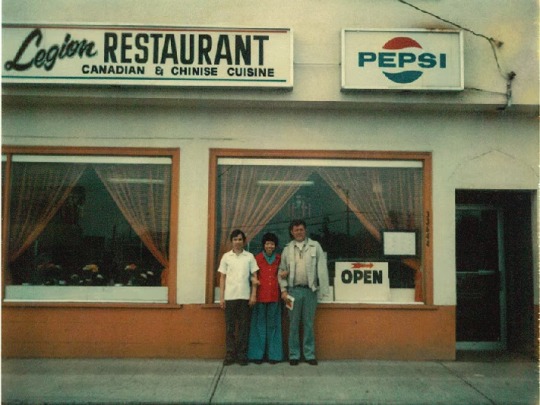
The legion restaurant in the 80s (?), from the book Chop Suey Nation.
#chop suey nation#ann hui#Chinese food#Chinese Canadian#abbotsford#the legion#legion restaurant#1980s#80s
0 notes